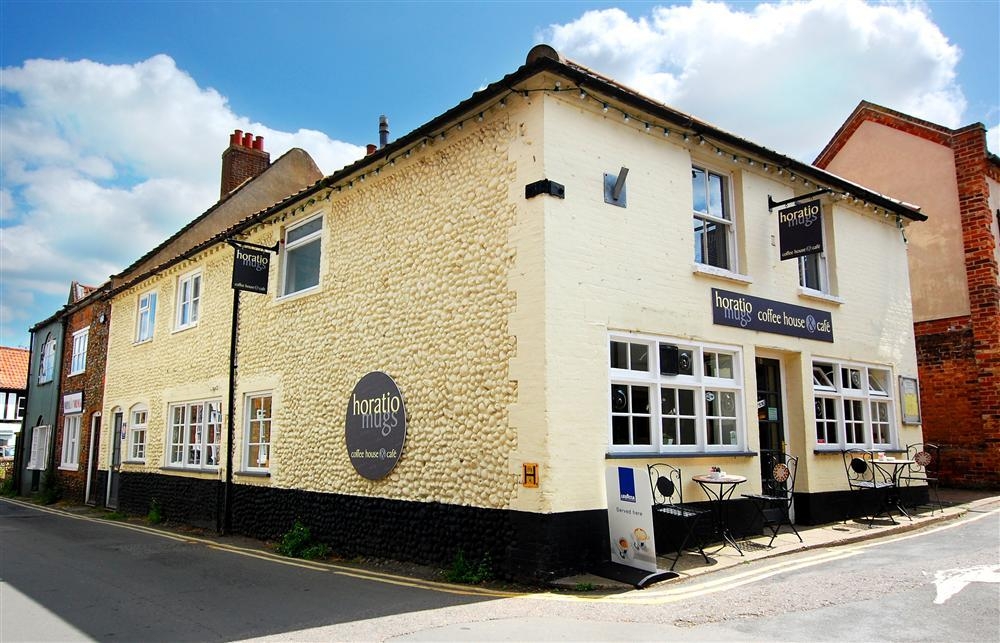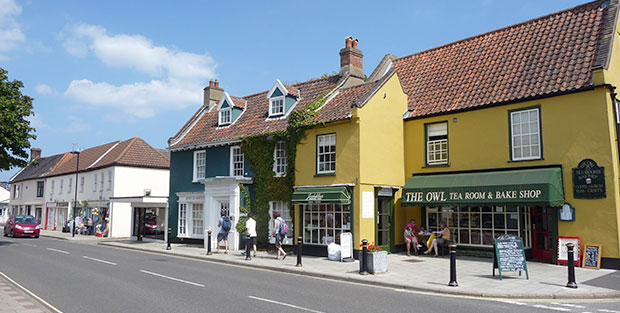|
Holt is a market town, civil parish and electoral ward in the English county of Norfolk. The town is 22.8 miles (36.7 km) north of the city of Norwich, 9.5 miles (15.3 km) west of Cromer and 35 miles (56 km) east of King's Lynn. The town is on the route of the A148 King's Lynn to Cromer road. The nearest railway station is in the town of Sheringham where access to the national rail network can be made via the Bittern Line to Norwich. Holt also has a railway station on the preserved North Norfolk Railway, the 'Poppy Line', of which it is the south-western terminus. The nearest airport is Norwich. The town had a population of 3,810 at the 2011 census. Holt is within the area covered by North Norfolk District Council. History: The name Holt is thought to derive from the Anglo-Saxon word for woodland and Holt is located on wooded high ground of the Cromer-Holt ridge at the crossing point of two ancient by-ways and as such was a natural point for a settlement to grow. The town has a mention in the great survey of 1086 known as the Domesday Book. In the survey it is described as a market town and a port with the nearby port of Cley next the Sea being described as Holt's port. It also had five watermills and twelve plough teams and as such was seen as a busy thriving viable settlement then. The first Lord of the Manor was Walter Giffard; it passed to Hugh, Earl of Chester, who then left it to the De Vaux family. By this time Holt had a well-established market and two annual fairs which were held on 25 April and 25 November. Over the years Holt grew as a local place of trade and commerce. The weekly market which had taken place since before the 1080s was stopped in 1960s. The Great Fire of Holt: On 1 May 1708 the town of Holt was devastated by a fire which destroyed most of the medieval town in the matter of three hours. The fire started at Shirehall Plain and quickly spread through the timber houses of the town. The church was also badly damaged with its thatched chancel destroyed and the lead melted from the windows with the flames spreading up the steeple. Local reports of the time state that the fire spread so swiftly that the butchers did not have time to rescue their meat from their stalls on the market. The damage to the town was estimated to be in the region of £11,000, which was a massive amount of money at that time. After the fire the town received many donations from all over the country and the task of reconstruction began. Georgian Holt: With most of the medieval buildings destroyed in the fire the townsfolk set about rebuilding the town. The rebuilding made Holt notable for its abundance of Georgian buildings, that being the style of the day at the time when the town centre was rebuilt. However, the town repaired and retains its Norman parish church, which is dedicated to St Andrew. It has been noted that if the town of Holt had not been destroyed by the fire in 1708 it would now look very similar to the village of Lavenham in Suffolk. 1968 RAF Mid-air collision: The Holt Mid-air collision occurred on 19 August 1968 when two Royal Air Force aircraft collided over the town. A Victor Tanker from RAF Marham and a Canberra bomber from RAF Bruggen in West Germany collided at night. This was following an electrical storm had disabled radar systems. A memorial stone hangs inside Saint Andrew's Church. |












